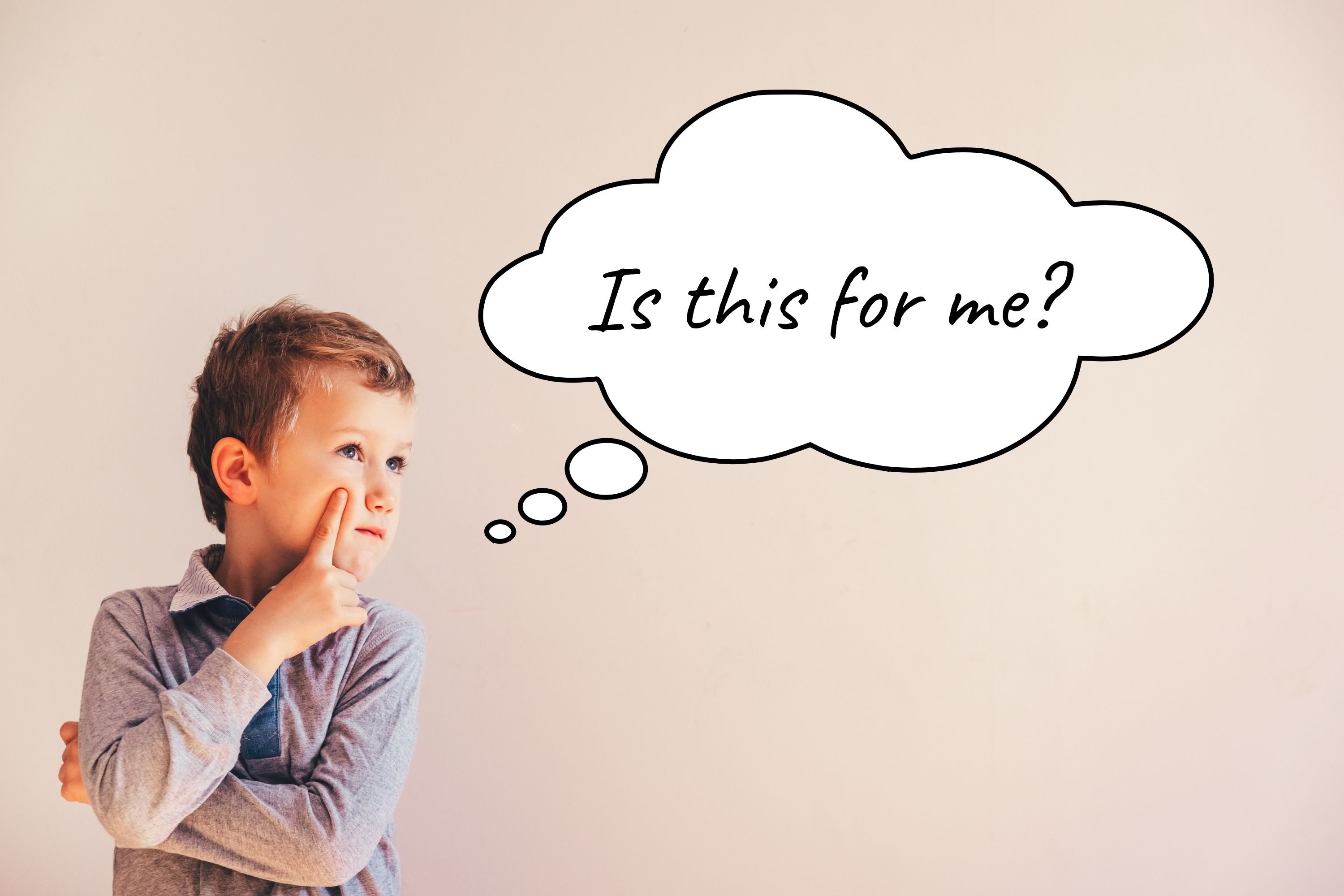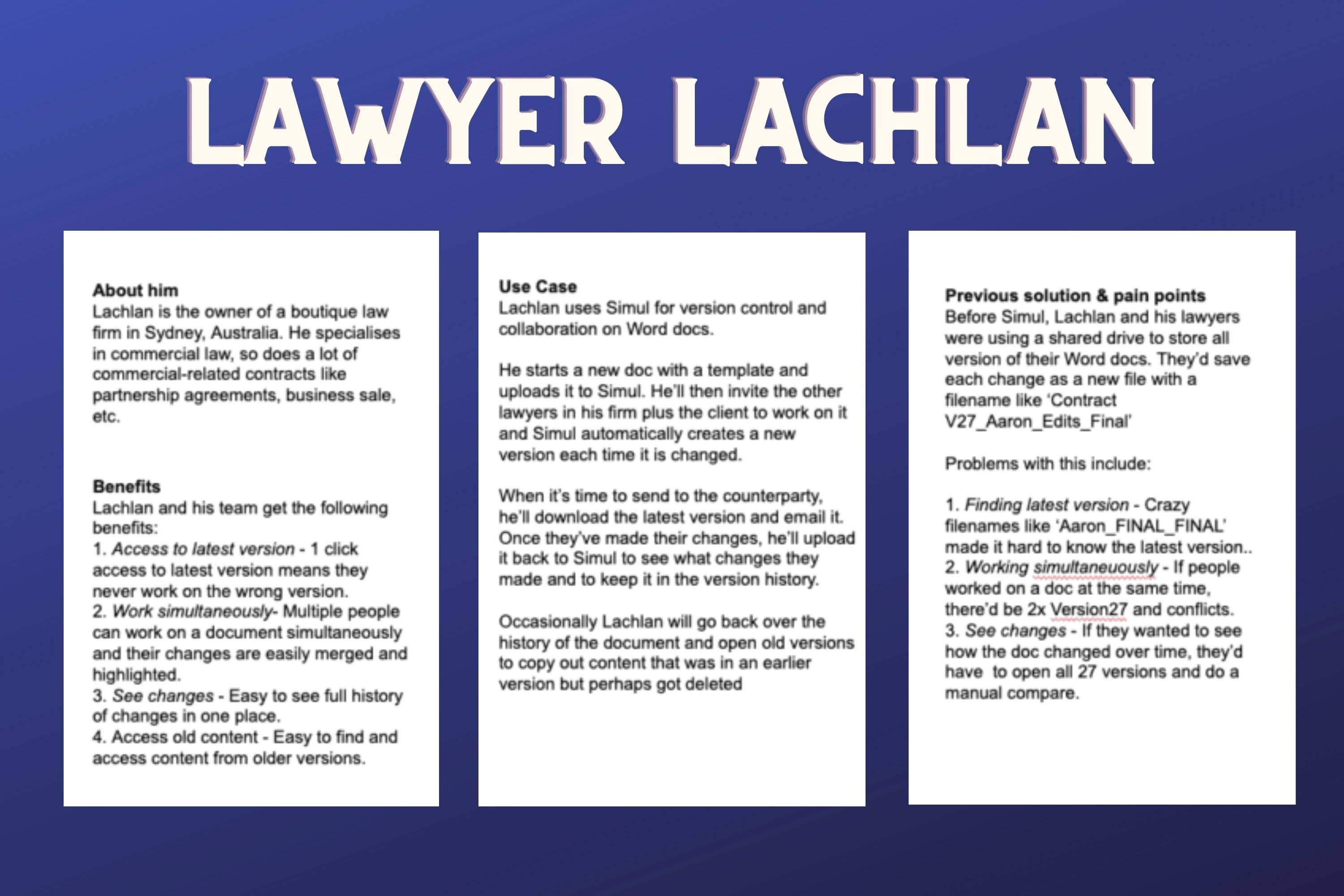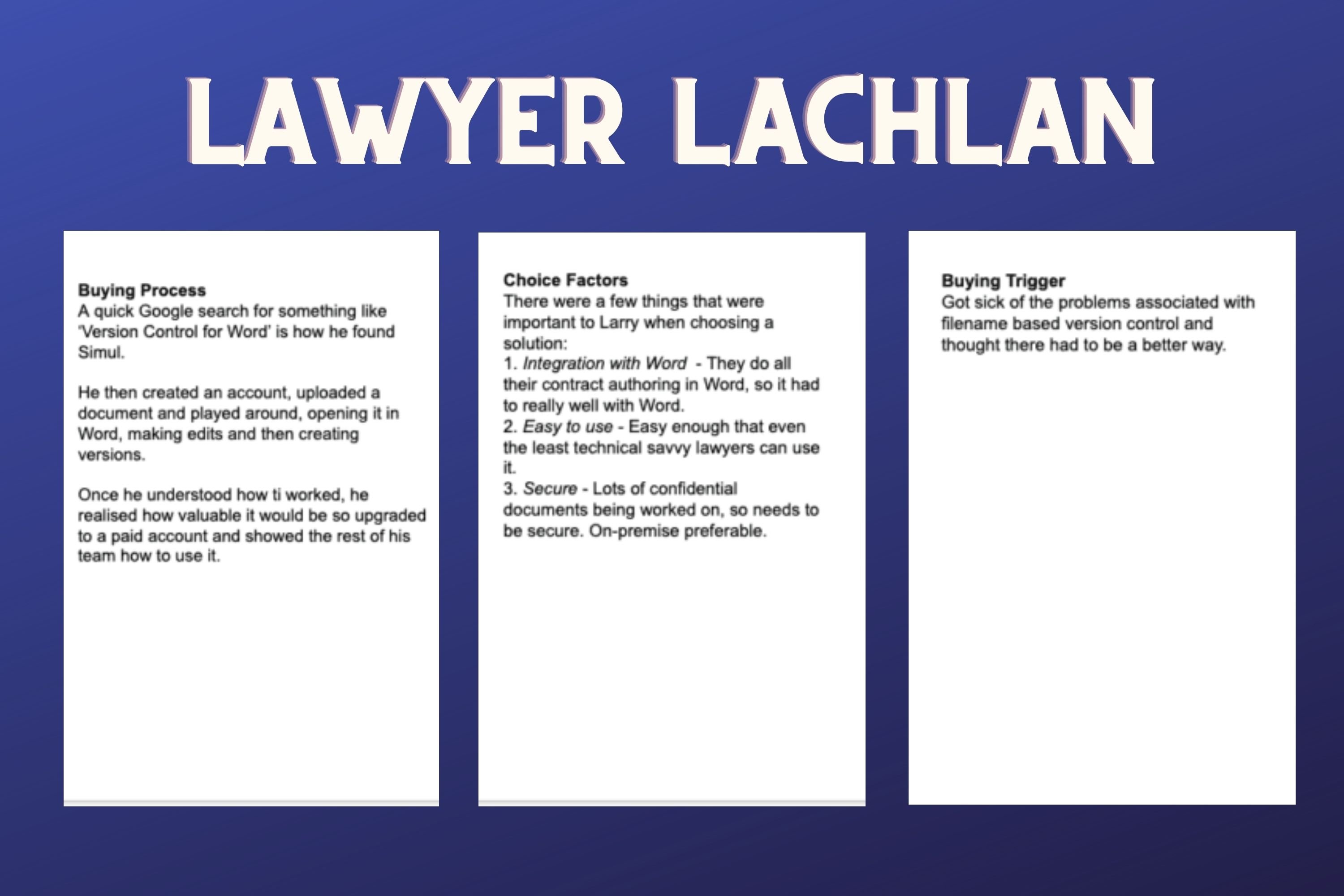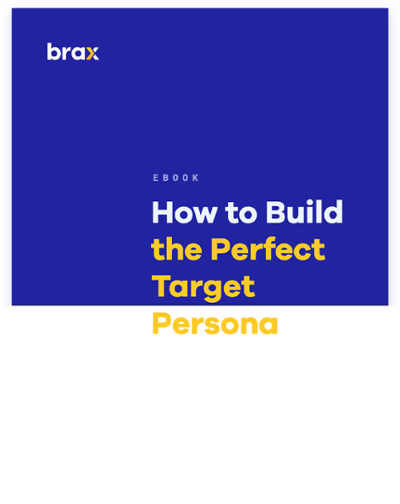If you’ve ever done any type of marketing before in your life, you’d know that targeting just the general public won’t cut it. If you target just about everyone and hope someone would buy from you, then your marketing strategy will ultimately fail. Not only that, but you’ll also be spending a lot of money with no hope of getting it back.
If you don’t know who to target, your ads will have no direction, and you will inevitably send mixed signals. Therefore, if you want to succeed in your business, no matter what your marketing strategy might be, you need to develop a target persona.

A target persona, sometimes called buyer persona, marketing persona, customer persona, or audience persona is an essential aspect of marketing. Having a target persona for your brand helps you to craft content that your ideal customer will surely respond to.
Having a marketing persona keeps the wants and needs of your audience on your mind and helps you to place your customers’ needs ahead of your own. This also prevents you from running marketing campaigns aimlessly.
According to the Weidert Group, up to forty-seven percent of buyers view or read through at least three pieces of content before finally deciding to take the next step in their buying process, which could be to speak with a sales representative or proceed with the purchase. In the current digital era, every sales team has to rely on the process of attracting prospects in order to convert leads.
What this means is that to be successful as a marketer, you must generate interesting content that speaks to your audience in terms of their various needs, pain points, and buying cycle stages.
Creating a target persona is crucial for marketing success because if you don’t have a clearly defined persona, you may not know exactly who to target your content to or how to even create content that will be of value to your audience.
Table of Contents
What is a Target Persona?
How Many Target Personas Should You Have?
Why is a Buyer Persona Important?
5 Steps In Creating A Target Persona
How to Use Your Buyer Persona
Examples Of Target Personas
Conclusion
What Is A Target Persona?
Before going into the benefits, creation, and application of target personas, it’s important you first understand what the term means.
A marketing persona can be defined as your ideal customer or prospect to whom your inbound marketing efforts and lead generation strategies are directed towards.
This represents your target audience in the sense that you give them a “personality” of their own. While your target audience deals with the demographics and psychographics of your ideal customers, a target persona focuses more on the needs, pain points, and buying process of your prospects. It is a detailed description of a person who is a good representative of your target audience.

When you’re able to understand the buying process of your prospects, you can directly speak to their needs and engage them through each phase until they are finally ready to make a purchase.
Your buyer persona is not a real customer, but a fictional character created with the information and characteristics of your best potential customers.
This fictional person should have the following:
-
A Name
This helps you identify the persona, especially if you are creating more than one. This makes it easier for you and your marketing team to plan and create ads because you already have a visual image of a person based on his name. If you simply give your persona a code or a number as an identifier, you will likely not think of him as a person, making it harder to dive into the marketing psychology for this target.
To create a name, you can simply take the first name of a previous customer, or you can look into people under the demographics of your target audience. You can also name your persona arbitrarily, as long as you can differentiate him from the rest of the personas you create.
-
Demographic details
This includes the age (can be the median age if coming from an age range), financial status, marital status, family system (descriptions such as single child, divorced parents, has three kids, etc.), career path (businessman, lawyer, engineer, secretary, etc.)
-
Interests
Since we consider the target persona as an actual person, he or she must have interests, hobbies, and other matters that captivates his attention and takes up his time. It is important to take note of this, even if you think these interests are not related to the product or service you are trying to promote.
-
Behavioral traits
These are certain actions and reactions that your target audience undergo when faced with specific circumstances. These are behaviors that can help you predict and influence what your audience will do next when faced with a situation. This includes their business decisions and buying behaviors.
-
Goals and motivations
This includes both short and long term goals. What do they intend to achieve in this lifetime? Does he or she hope to build a home, buy a vehicle, a boat, or a second house? What are his dreams? Does he hope to get promoted in his job?
-
Pain Points
What are your customers’ issues? What problems do they encounter on a day to day basis? What are their long-term concerns? Your audiences’ pain points are what drives them to either avoid or indulge in certain things. These are very useful in finding the right angle when trying to attract your audience.
-
Day to Day Activities and Sources of Information
This is actually not a requirement, but is a good way to help you grasp how your target customer thinks and reacts. It also help you evaluate their routine, therefore, allowing you to determine the best way to interrupt in a positive manner.
-
A Face
To make your buyer persona more realistic, you could give them a face using stock photography. You could also create cardboard cutouts of your target persona to give them a real presence within your office.
The whole point is to address this model customer as a real person to allow you to craft marketing messages directed specifically to them, and guide everything starting from product development, to the voice of your brand, to the advertising channels you use.
How Many Target Personas Should You Have?
A company may need to create more than one buyer persona for several good reasons, nevertheless, do not forget that the whole point of creating a target persona is to narrow down your marketing focus. For this reason, you should be cautious not to create too many.

If you happen to arrive at more than three buyer personas, it may be best to decide on which two or three are the most valuable to your business, and focus on them. According to the late Peter Drucker, an expert management consultant and educator, the key to all economic success lies in concentration. What this means is that it is always more profitable to do right by only two or three targets than to share your effort to serve many.
One helpful way to reduce the number of target personas for your marketing scheme is to group them according to needs. That way, you would arrive at fewer groups thereby narrowing your target focus. Although it is better to have a few targets, preferably not more than three, there are times where having multiple target personas is essential.
When To Have More Than One Target Persona
Many brands have several target audience divisions. A good instance is in the case of apparel brands. If your business is the apparel niche, your targets may include both girls and boys. Under girls, for instance, you may be aiming precisely for those with sisters.

Within each audience division, it is possible for a brand to have several personas. Dividing your audience into segments is crucial because it allows you to scale your targeting further.
When you regard your audience as one unit and center your marketing message and campaigns around the whole, you are risking leaving a monotonous impression across the group. This is because by trying to please and address everyone at once, you don’t make anyone feel like you’re speaking directly to them.
You could divide your audience at different levels, rather than unintentionally shutting out valuable customers or sending marketing messages that no one can relate with deeply.
When you divide your audience at different levels, you can then build customized marketing campaigns for each division and persona.
This ultimately makes your audience feel like your campaign message was made precisely for them, thereby building trust in your brand.
Bear in mind the purchasing decisions of different personas could be similar, so it is only reasonable that you place them in categories. The secret to grouping your audience is to scale by targeting audience segments overall, and afterward creating more precise messaging based on psychographic, demographic, intent, or behavioral information. In other words, where necessary, you will have to segment your segments.
Since there is no established number of buyer personas that work best for all businesses, you will have to figure out what bests for your own business. Although a majority of businesses have at least two marketing personas, you shouldn’t create too many.
Deciding on the Number of Buyer Personas
To decide on the perfect number of buyer personas to create for your business, you should determine the following:
-
How many verticals you serve.
If your business happens to target various verticals, creating a special buyer persona for each one may be the ideal thing to do, even when it seems two customers from separate verticals appear to have a lot in common.
You should do this because it would make it very easy for your prospects to make the decision to purchase from you. Your audience should never say ‘but is this right for me?’ because you have crafted your marketing materials towards convincing them that it is actually meant for them.

Never make the mistake of leaving it in the hands of your audience to make the right assumptions about your offer.
Most consumers make a lot of analysis before finally purchasing, and they would always favor the offer that they believe is more specific to their industry because it makes them feel safer.
Creating individual buyer personas for each vertical also comes in handy when you go further in your inbound marketing and begin to integrate more lead nurturing campaigns and smart content.
-
If you’re targeting different niches in each vertical.
Imagine a man walks into a store to search for hand lotion and finds an aisle filled with probably hundreds of options. It may be quite difficult to make a choice, especially if he had no prior recommendation from anyone. In cases like that, he will most likely make a random choice or pick a product that someone he knows uses.
But imagine that same man walks into a store to buy hand lotion and among hundreds of options, sees one that’s labeled ‘for men.’ His options will instantly be narrowed down because he believes the products labeled ‘for men’ were made specifically for him.

This is why niche marketing is very powerful.
Marketers working in the beauty and skincare industry often separate male products from female products because they are two separate niches, even if the products were made with the exact same formula.
The same thing applies if you are aiming at multiple niches within one vertical. Creating separate buyer personas for those specific niches could be beneficial to your business.
Even if you may not create separate products for each niche, you should at least create separate content centered around each persona.
-
Who your best customers currently are.
A lot of times, businesses aim at selling their products to specific groups of people and overlook the people who actually buy from them the most. When you take some time to look at what you’ve already done and observed your best customers at the moment, you may notice a different trend among your loyal customers that don’t go in line with the buyer persona you’ve created. In cases like this, loyal customers deserve a separate buyer persona of their own.
For instance, you may have a SaaS business that targets important decision-makers in enterprises because you really want to make some big sales. But then you notice that for some reason, small local IT companies love your service the most and account for a significant percentage of your sales.
Although the small IT companies were not the customers you had in mind initially, they do bring in a big portion of the business. So, it would only make sense to add more effort to targeting those people specifically to help your business grow quicker.
Why Is A Buyer Persona Important?
It is always easier to speak to a small group of faces and names with clear backgrounds, goals, and challenges, than an indistinct set of data points. The importance of knowing precisely who you’re addressing through your marketing cannot be overemphasized.
Below are some of the top reasons why you should have a buyer persona:
-
It helps you connect with your audience and identify their needs
Having a buyer persona for your marketing campaign helps you connect with your audience, in the sense that you will be able to identify where your customers spend time online so you can be there, too.

Knowing about where they often go online enables you to post your content in places where they are most likely to see it and helps you understand what kind of content needs to be in each place.
Target personas are a key part of inbound marketing because it helps you create content to meet the needs of your customers, rather than pushing unwanted ads. This not only makes it easy for your audience to easily access the information they need to be confident about accepting your offer, but it also helps them build trust with your brand.
While developing your target personas, you will have to evaluate the goals, challenges, and objections of your audience. This information will give you insight into what they need from your business and help you understand what to offer and how to sell to them.
When you want a perfect gift for someone close to you, you can easily visualize them in your head as you shop – what they’d love and things they’d hate. The same thing applies to when you have a buyer persona while marketing your product or service.
You can humanize your audience, decide on topics that would be valuable to them, and create content that appeals to them. When you connect with your customers, your customers connect with you as well, and it becomes easier to close sales.
A lot of times, customers are not sure of what they want, but when you ask the right questions at the right time, they can arrive at a decision that favors your brand.
-
Helps you have a good grasp of their purchasing decisions
When you have a good understanding of how your target audience goes about making a purchase, you can know when to get in front of them.
Perhaps your target persona is the kind that does most of their research online before approaching a company to make a purchase. Knowing that will help you determine what you have to do to meet them early at their point of need and present them with educational information relevant to what they are in search of. That way, you could sell them indirectly.
-
Helps you acquire better quality leads
It has been established that buyer personas help you identify what interests your customers, which content topics would appeal to them, and where to find them online.
This knowledge enables you to direct your marketing to the right people and in the right places, thereby giving you the power to generate better quality leads.
Leads are great, but good quality leads are the best. Without the right kind of leads, selling your products may still turn out to be challenging. With the information you gather about your targets to make a personal connection, you could direct targeted messages through email marketing to your leads to close sales and create better customers.
-
Helps you determine the type of content you should create
Content marketing is an important aspect for every business. Whether you are using your content for landing pages, lead capture pages, or simply information pages within your website, understanding your target customer helps you make better content tailored for their needs and whims.
Is your buyer someone who reads a lot and would like in-depth information? Then you should create long-form content as opposed to short-form ones. Is your buyer someone who prefers video content over articles? Then you should focus on creating more videos instead of blocks of texts.
-
Lets you stand out in the midst of competition
Using marketing directed towards your buyer personas enables you to outperform your competitors. This is because websites created while having your personas in mind always turn out better than the generic ones.
Many companies enjoy talking about why their business stands out from the rest, but often overlook the questions that prospects are asking. By focusing on your customer base through your buyer personas, you can reach out to them and show them you know their problems before they realize they need you.
This not only increases the trustworthiness of your brand but shows prospects that you truly stand out from others out there.
-
Helps in list segmentation
Buyer personas also help you properly utilize marketing by the use of list segmentation. With buyer personas, you can easily segment your customer list according to their needs, thereby making it easy to create targeted emails and messages that appeal to each persona type.
When you do this, you get valuable information to them without them having to seek it out elsewhere. Even when you acquire new customers, it would be easy to categorize them under your already existing buyer personas to enable you to send targeted messages to them also.
-
Defines the best possible advertising angle to take advantage of
The advertising angle is the strategy you can take to trigger an emotional response from your customer. Most buying decisions are prompted by emotions, such as regret, fear, and excitement.
Having a buyer persona helps you understand how to stimulate these emotions and get into the minds of our potential customers.
-
Guarantees business consistency
Businesses, both small and large often consist of several moving parts. Many businesses lose track of who their highest value customers are due to numerous departments and stakeholders.
However, when you have buyer personas, consistency is ensured because all departments of the business will be able to focus on particular kinds of people. Even when you change team members, your team goals are consistent.
Every customer that comes in contact with your brand will get a consistent experience across all departments according to their persona type, that is, if the strategy is employed correctly.
Consistency in turn ensures that your brand is speaking to customers the way they should be spoken to.
-
Helps you create better products
Once you empathize with customers and identify their needs through your buyer personas, you not only generate better quality leads and customers but also develop new products and services to meet their needs and expectations.
When you create new products and services and want to drive customer satisfaction, your offer has to be good enough to attract the customers. Buyer personas are a must-have to accurately predict how successful your products and services will be. When you put the needs and recommendations of your personas into consideration, you are sure to create offers backed by data and research.

-
Enables businesses to make objective decisions concerning website redesign
Separating opinions from facts can be difficult when redesigning a website. Opinions can cause you to redesign your website based on what pleases you and other stakeholders, rather than what appeals to your target market.
When you confuse the needs of your consumers with your company’s preferences, you run at the risk of not connecting properly with your target audience. To be careful about the content incorporated into your website during the designing process, utilizing buyer personas is pivotal.
The targeted messages throughout your website would differ according to your buyer persona. For instance, a website containing messages targeted towards Millennials would be different from one directed towards Baby Boomers.
5 Steps In Creating A Target Persona
Creating a target persona involves finding out what makes your target audience tick, and that is no small task. Deciding where to start, the questions to ask, and how you can draw conclusions from the data you gather is often challenging.
However, the following steps to persona development will help guide you through the process of creating a buyer persona that works.
1. Research Your Target Audience Thoroughly
This is the first step to creating a target persona because to make one, you have to collect details about your target audience. Your marketing audience speaks to all aspects of your advertising strategy and does not encompass everyone.
To define your marketing audience, you have to first identify and have good knowledge about your niche. Once you’ve decided on the kind of audience to target, you will have to craft relevant ads, content, and messaging.
Researching your audience is not complex, and mainly involves narrowing your area of concentration while enlarging your reach. To thoroughly research your audience to gather data that would help in building your persona, you can carry out the following steps:
a. Gather data on your existing audience and customers
Consider the people who want to engage with your brand on the platforms you’ve made your presence known. Do this by compiling data on people already following you on social media, buying from you through online and offline channels, and interacting with your content.
Below are some important data points you can employ:
-
-
Age
-
When gathering data about age, you don’t have to be too specific. All you need to do is focus on arriving at the age range or generation your audience and customers fall into.
-
-
Location
-
Find out the time zone your customers live in to help you determine which geographic areas to target and when you should schedule your ads to boost visibility. With this data, you can also learn which times of the day your ideal customer would be available to help you decide on the best times to have sales reps online.
-
-
Language
-
Find out the languages your audience speaks. Don’t assume they all speak your language or the dominant language of their current geographical location.
-
-
Spending powers and patterns
-
It is also important that you learn how much money your audience is willing to spend, and how they approach purchases in your price category. Learn about their financial concerns and preferences.
-
-
-
Interests
-
-
Gather data on the interests of your audience – what they like to do, what TV shows they like to watch, and other businesses they interact with.
-
-
Challenges or Concerns
-
Find out the problem areas of your marketing audience or what causes them to worry.
-
-
Stage of life
-
Learn about what stage of life your audience is and determine which category the majority of your audience falls under. Stage of life may include whether they are college students, dropouts, new parents, retirees, and so on.
The above data points work well for business-to-customer companies. If your customers are companies and not the consumers directly, you should consider the following data points also:
-
-
Size of business
-
Find out what kind of businesses buy from you and engage with you – whether they are start-ups or already established brands.
-
-
The head decision-maker
-
It’s important that you learn who makes the most buying decisions to know exactly who you’ll be targeting – the CEO, CTO, or marketing manager perhaps.
This information could easily be gotten from social media using social media analytics tools or sight-specific analytic tools such as Facebook Audience Insights. You could also incorporate UTM codes into your content posts to manually or automatically gather information about whoever clicks on your content link. To view information about people who click your links, make use of Audience Insights on Google Analytics to access demographic information of your most engaged audience. Another way to gain knowledge about your audience is by viewing your own customer database.
b. Monitor conversations audiences have about your brand through social listening.
Social listening is a very important component of audience research because it helps you to uncover mentions of your brand thereby enabling you to track, analyze, and respond to those conversations.
Through social listening, you can monitor conversations including keywords and hashtags about your industry, business, and products, and reveal what your audience is saying about you and your competitors online even without being tagged. When you reach out to these conversations, you can find more of your ideal audiences on social media channels.
c. Research which channels your audience uses.
In addition to finding out what your audiences are saying about your brand, you should also find out where they spend their time online, especially on social media.
There are various web tools you could employ to get this information. Apart from UTM parameters used with Google Analytics, you could also use any of the following reliable tools:
To use this tool, all you have to do is enter a combination of terms relevant to your business in the search bar to reveal information about the top sites, hashtags, and authors for your search.
This tool shows you the top sites your audience visit. Using hashtags relevant to your brand, carry out searches on the platform to see the most popular referring domains. To know the social networks your audience visit, check for social websites among the domains.
d. Study your competition
There’s a very good chance that you and your competitors share the same audience. For this reason, you should also find out what your competitors are doing to learn what appeals to your audience that you may not have already incorporated.
Studying your competitors also helps to realize audience segments you may not have considered. Some tools you can employ to study your competition are:
This tool reveals information about the content shared by your competitors across social networks, along with data on how audiences engage with them.
To use Buzzsumo, all you have to do is enter relevant keywords for your industry in the search bar and then look for patterns from the results you see. The trends you see will help you determine what methods have already worked successfully for your competitors. You can then use any new information you discover to interact with your audience and learn more about them.
Search Streams can be used to monitor the social posts of your competitors and help you look our for patterns in their hashtags, post type, and content strategy. You could learn what appeals to your audiences from this information.
Aside from plainly looking at one competitor’s target audience, you can also hyper-focus by checking out which segments of the market two or three of your competitors overlap in. You can either focus on areas they don’t dwell mostly in, or you can go ahead and dive into the most competitive market segment.
You can also use the audience overlap tool to compare your company against your another. If your target audience and theirs overlap, then you can look into this company’s strategies since they are targeting your audience, too.
2. Find Out Who Your Target Segments Are
If your product or service is exclusively used by one market segment, then this step may not be necessary. But if you have a product or service that is used by many different industries, job roles, and so on, then this stage of buyer persona development is crucial.
After deciding on the audience you wish to target, you have to narrow it down and determine who your key customer segments are. Below are useful steps to achieving this:
a. Compile a list of customers
In finding out who your target segments are, you should begin by compiling a list with information collected from each customer (both former and active customers).
The information you include in your list will depend on several factors such as your sales process, industries served, and so on. Here are some basic areas from which you can gather information about your customers:
-
-
Demographic information
-
Demographic information about the customer can include data points like name, gender, age, career or position, annual revenue, and address (city, borough, zip code).
If the customer is a business, add to your list the size of the company (micro, small, medium or large), its industry, and the number of employees.
-
-
Revenue earned
-
This should include information on the amount of revenue you make from each customer to help determine which percentage of your sales come from each one. It should include data points like annual contract value, total lifetime value, and average spend per transaction.
-
-
Engagement information
-
Engagement information looks into the level of engagement each customer has with your product or service and could include data points like how many login attempts per month, how many users are actively using the product, and how many times the product was used.
b. Evaluate your list at an industry level
After compiling a list of customers with the attributes you’ve chosen, the next step should be to analyze the information you’ve gathered and look for trends.
Tools like Tableau can be used to create arrays of charts and graphs from your Excel spreadsheet to give a clearer presentation of the information gathered.
You could analyze your list based on the number of customers by industry, average revenue by industry, number of customers by country, and average revenue by company size.
The whole point of analyzing your customer list is to gain some insights into who your most profitable customer divisions are.
If a company decides to break down its customers by how much they pay, they could find out the customers that pay the highest and the customers that pay the lowest.
If 80% of the customers happen to be paying between $0-$100 for example, it doesn’t necessarily mean that they account for most of the company’s revenue. A segment that pays between $100-$1000 and comes from only 20% of the company’s customer base could account for most of the revenue generated.
In this case, more focus should be given to the segment that generates the most revenue. If the segments with the highest revenue generation are from the Construction and Manufacturing industries for instance, then those industries should be targeted as key segments.
Remember the Pareto Principle, which states that 80% of the results come from 20% of the root causes. In the case of analyzing revenues, this could mean that only a fourth of your customers contribute to the bulk of your earnings. It would be smart to focus on this 20% then, yes?
c. Evaluate your list at an individual level
After analyzing your customers at the group level, you should narrow down further to find out who the target customers are at the individual level. In other words, who exactly you should be targeting within these businesses.
In the example used above, the target segments arrived at were the Construction and Manufacturing industries. To arrive at the individual level, the next step would be to create a list of customers in those target industries containing information on the primary buyer or user of your product such as their job title, department, gender, and seniority.
After compiling this list, you can analyze it by building graphs and charts to make the data easier to interpret. If after the analysis, it is discovered that within the Manufacturing companies, the Project Manager was primarily in charge of purchasing and using the product, the project managers should become your buyer persona.
3. Identify The Pain Points And Goals Of Your Customers
Your target persona should also include your customers’ pain points and goals. You should learn about the challenges your prospects are trying to figure out, what is stopping them from succeeding, and what obstacles they face in achieving their goals.
The goals of prospects are what they hope to achieve, and they may be personal or professional, depending on the kinds of products or services you offer.
What your prospects hope to achieve doesn’t necessarily have to be related to your offer, because the aim of creating a buyer persona is more about knowing your customers than trying to match them directly to your products.
When you know the goals of your customer, you could then use that to form the basis of your campaign or the tone of your marketing. Learn what problems your customers face, what motivates them, and what their end game is.
This information will help in creating a buyer persona that truly represents your target audience. The key ways to gather information about the pain points and goals of your customer are as follows:
-
Use social listening
This has already been mentioned above when gathering information about how much your brand is being talked about. This time around, you can use this method not only to research on your brand, but to research on what concerns your customers have, as well as what possible solutions they have.
-
Gather information through customer service
Your customer service and sales team interact with customers and prospects on a regular basis. This could be leveraged to find out information about the kind of questions they ask the most.
Your customer service or sales team could also help identify patterns in challenges different groups face, and also give you insight on customer goals. Real quotes from customers and prospects could also be collected to give depth to your buyer persona.
-
Surveys and interviews
Surveys are also a good way to learn about the goals and pain points of your audience. You could make use of online survey tools to create surveys from targeted questions, then send it to individuals within your target audience.
You could also carry out a structured phone or in-person interview to learn about the experience of your customers or prospects.
If you don’t have the manpower for this, nor the contact list to find the right people to ask, then you can hire companies that specialize in surveys and market research.

4. Create A Clear Picture Of How Your Offer Can Be Of Help
At this point, you should have gotten a good grasp of what your customers’ pain points and goals are. The next step would be to create a clear picture of how your offer can be of help to them.
One thing a lot of marketers find challenging about this stage is how to focus on the benefits of the product or service to the customers rather than the features of the offer.
Nevertheless, this is the major reason buyer personas are created in the first place.
To create a clear picture of how your offer can be beneficial to your customers, ask yourself these questions for each of the customer challenges and goals you’ve discovered:
-
How can my product be of help?
Can my offer solve a particular concern? What is this concern and how can my product solve it? Try to give a clear outline as an answer to that question and incorporate it into your persona template.
-
What purchasing barriers does my audience face?
What would they prioritize first over this offer? How can I help my customers overcome these barriers or move my offer towards the front of the priorities?
Think about whether your customer needs this product now or not. And if not, what circumstance can make them need it now?
For example, you have an insurance offer. Of course, your target customer doesn’t need it now because they won’t be using it right now. But he should buy it now because he might need it tomorrow when he or his family member gets involved in an accident.
-
At what stage are your prospects at their purchasing journey?
Determine if they are researching, looking for reviews, or or ready to buy. Keep in mind that “warm” customers (those who have seen the offer or are researching about this offer) have higher chances of buying than “cold” ones.
Once you have created a clear picture of how your product or service can be of help to your audience, you can then go ahead to draft your buyer persona.
5. Create Your Target Persona
After all the research is carried out, you can now gather all the results you’ve arrived at and identify common characteristics. While placing these characteristics in groups, you will unveil what truly makes your customer personas unique.
If, for instance, you arrive at an important customer group of young adults who live in country areas, own a car and enjoy camping, you will have to make use of this collection of features and create a persona that you can easily identify and relate to.
You should make your target persona as realistic as possible by giving the persona a name, job title, home, and other basic defining characteristics.
You can aim to include as much information (like something you would see on a dating site or learn from a brief conversation with someone), including the persona’s pain points and goals.
The car-owning rural young adult campers could be given the persona name Michael Anderson. Depending on the research results, you should give him characteristics that present him as a real person, for example:

Bear in mind that a list of characteristics only define a persona, but does not equal to a persona. What this means is that only making a list of characteristics is not enough.
You will have to use the characteristics to create a realistic description of your customer base. Although your persona may not match the characteristics of all your customers, remember that the aim of creating a persona is to allow you humanize your customers while directing marketing messages to them, rather than focusing on a collection of data points.
When you address a message to Michael, it’s much easier to personalize it than when you speak to all men in general. While fleshing out your customer personas, don’t forget to describe them as who they currently are and who they hope to be. This will enable you to start thinking of ways your products or services could be of help to them in achieving their goals.
How To Use Your Buyer Personas
Now that you have your buyer personas in order, the next and most important thing to do is put them to good use. When you use your buyer personas correctly, you would notice an instant positive turn around in your marketing campaigns in the form of improved click-through rates and more conversions.
Below are efficient ways to apply your target personas:
1. Use Your Target Personas To Classify Your Prospects
To ensure that your buyer personas are used in the most effective way possible, you have to come up with methods to classify your prospects accordingly. When you do this, you will be able to tailor every aspect of your marketing as closely as possible to the kind of audience you’re dealing with.
Bear in mind that your buyer personas are the key to targeting customers in the most precise way possible and convincing them to convert.
The most straightforward way to classify your prospects under each buyer persona you’ve created is to ask them clarifying questions during the very first interaction you have with them.
For example, if you receive a call from a prospective customer that called to make inquiries about your website services, you could ask ‘What is the greatest challenge you’re facing with your current website?’ If the prospect responds that he’s having issues capturing business leads, you should be able to connect him with a buyer persona you’ve created and then adjust your sales pitch to suit that persona.

Since your persona is someone you’re familiar with, it would be easier to connect with the prospect’s needs and win him over.
Some other questions you could ask to identify the customers that fall under different buyer persons include:
- What do you hope to achieve by using our product or service?
- How do you see our product or service being of help to your challenges?
- What part of your business challenges you the most?
- Which worries or upsets you (compare two defining characteristics)? For example, ‘Are you more interested in building a website from scratch to suit your business or would you like to simply redesign your current website?’
- If there is one thing that I can help you with, what would you want it be?
Another way to get information about prospects to help classify them according to your buyer personas is by creating a contact form with straightforward questions.
Your contact form could ask for simple information such as location or timezone, company, position, and so on. This would help you determine if the prospect fits into any of your buyer personas.
If there is no way to add questions to your sales cycle that would help you easily classify your customers, you could still try other methods. One way is to create different ads (split-test ads) to target your different buyer personas, then monitor which customers came through which ads using tags.
You could attach different promotional codes to the different ads you create, then use it as a means to detect which of your ads piqued the interest of the customer. An easier method, though, would be to use a tracker when creating marketing campaigns.
You should be able to tell what kind of persona the customers fall under based on the ad that caught their attention.
The method of classification that works best for you and your business ultimately depends on your target customers, advertising strategies, and sales funnel.
If you have prospects who don’t fit into any persona, you can gather such responses and use them to create another buy persona in the future, if necessary. But in the meantime, try to group them under the closest buyer persona to their nature.
2. Use Your Target Personas To Create Customized Marketing Funnels
Although classifying your prospects into their respective buyer persona and tracking them is important, driving your buyer personas into different marketing funnels that suit them is the main reason for creating the personas in the first place.
As discussed earlier, having a good knowledge of your buyer personas enable you to direct messages at them in ways that are likely to resonate with their precise needs and wants.
Since your buyer personas differ, they would probably each have a preferred means of communication. They might even respond to different ad formats differently.
You can leverage this knowledge of their preferences and come up with individual marketing funnels.
For instance, during a sales call, you will want to introduce content that is specific to a persona since the phone call may be the penultimate stage of the buyer’s purchasing process. Some personas might respond well to an upsell, while others won’t.
You should create a set of sales scripts that speak to the needs and wants of your different buyer personas. Once you have been able to figure out which buyer persona your caller falls under through a set of clarifying questions, you can then switch to the appropriate script immediately. This way, you will have the most persuasive sales pitch ready.
Here are some other ways you could use your buyer personas to create customized marketing funnels:
-
Refer to blog posts already written for each persona.
You should strategically create blog posts by uploading content that will resonate with each of your target personas. Then refer to those blog posts when interacting with prospects you’ve classified under a certain buyer persona. This will help strengthen your sales pitch in an informative and yet compelling way.
-
Modify responsive web content.
You could create personalized content with the help of tools like Evergage or OptinMonster. The customized content should be created based on the target personas you’ve classified your prospects under. You could set it up in such a way that as soon as your website detects the IP address of your prospects during their visits, the content features changes dynamically to suit them. An example would be dynamically changing the city and images based on location.
Everything from the call-to-action to the whole content can be optimized to appeal precisely to the buyer personas you’ve chosen for the prospects.
3. Use Your Target Personas To Refine Your Language Style
Your content should use the language style that is comfortable with the audience you wish to attract. Keep in mind that different age groups, genders, education levels, or professions talk differently, therefore, it is advisable you use a conversational style that fits your target audience.
When you use some keywords and phrases your target audience is familiar with, there would be a higher chance of them connecting to your market. How you talk to your target audience can influence how they react to your brand and offer.

Here are some elements of a language style that you can adjust depending on your buyer persona:
- Vocabulary - your choices of words or the jargon you incorporate in our speech or articles.
- Tone - should you talk in a conversational manner, like talking to a friend, or should you sound more professional?
- Point of view - should you speak in the first person (I or we), or should you speak in the second person (you)? When speaking in the first person, you are often discussing about the brand or company, and including the customer as part of the “space”. When speaking in the second person, you want the focus to be on the customer and his needs.
Once you know the kind of audience you’d like to attract through buyer personas, you can dig deep into the vocabulary they use online. When you examine the social behaviors of your target audience members, through their profiles, blogs, or websites, you can discover the language used naturally by them. To discover more of their language, you can send out user surveys.
It is important to be authentic when creating content, try to use the language that feels natural to your target audience. Trying too hard to use some slang or terms can push your audience away and reduce your credibility. You can use your buyer persona to make sure the language style you use is in tune with the language of your target audience.
4. Create Customized Content
One of the most important ways to use target personas is to create customized content tailored to suit the needs, interests, and personality of your prospects.
Below are the ways you can use your buyer personas to control your content marketing strategy:
-
-
Style and Tone
-
As previously mentioned, you can use your buyer persona to set the proper style and tone when creating your content. The content you create for a professional female entering retirement would be totally different from the kind of content that appeals to a teen male just entering college, even though it is the same product or service.
-
-
Keywords choice
-
When you use your buyer personas to find out what your target customers are searching for online, you can go beyond the general industry-related keywords to incorporate additional keywords that represent your ideal customer.
-
-
Problem-solution strategy
-
With the help of your buyer personas, you can create content that speaks about a problem your audiences face and then offer a solution. Since most people now turn to the internet to help solve their problems, you could leverage that to show them how your product or service can be a solution. The trick to achieving that is to understand your customers, and such understanding is acquired through target personas.
-
-
Website content
-
Since your website is probably the first thing your prospects see, you must ensure your website content is good enough. This also includes how the website is designed. Both the content and design should be tailored towards your target personas so that it appeals to them on the first visit.
-
-
Blog topic creation
-
The information you gather from creating your target personas can be used to choose the right blog topics that interest your customers. This would ultimately reduce the bounce rate of your content and increase your business’s conversion rates.
-
-
Social media strategy
-
Apart from creating personalized content for your website, you could also make use of your buyer personas to create targeted social media content. In addition to that, the knowledge you gain from your customers’ behavior online could help you create a social media strategy that attracts the most attention from your target audience.
5. Focus Your Marketing Channels
The means or channels you use to promote your marketing plays an important role in grabbing the attention of your target audience. Many marketers use social media, guest blogs, SEO, or paid advertisements as part of their marketing plan to help increase brand awareness, but, you need be to be specific about the channels you use to promote your content if you want to win over the premium quality audience members.
Where your targets spend most of their online time can be discovered through your buyer persona. The social media platforms used regularly, the blogs they visit frequently, and the websites popular among your target audience should be noted.
Your marketing persona likewise helps determine the type of ad format your audience will respond to best. For instance, Millennials respond more with native advertisements rather than display advertisements.
You can send out surveys or look at the demographics of each page you visit to get more information. A close look at the channels used by other brands that share your target audience with the highest success rate could also help you determine what channel is best.
If you want to get your business name to the front of your target audience, you should find the channels that are popular amongst them. Once this is covered, the next step would be to put the focus on promoting in these locations. This way you can appeal to your marketing audience when you run advertisements and campaigns.
6. Create Influencer Partnerships
You can improve the credibility of your business in the sight of your target audience by forming a partnership with popular influencers. The right influencer partnership can enable you to promote your business to an already trusting audience.

The credibility of the influencer you’re partnering with will determine the amount of target audience members that will be more likely to connect to your business and company to make a purchase or make inquiries.
With buyer personas, you can easily identify the right influencers to make a partnership with. This is possible because the buyer persona informs you of the type of audience you wish to attract.
You should research your targets’ personal profiles to find out who they connect to or engage with by checking out what they have reposted or liked on social platforms. There are other strategies to help you find the right influencer, like specific topics that can help you find popular people or professionals related to your business.
Keep in mind that when contacting an influencer for a partnership, it must be advantageous to both parties. For example, you can ask the influencer to share some of your content on their social media page or profile, or permit you to make to guest post on their website, in return for using them as reference.
Examples Of Marketing Personas as Created by Companies
When creating your target personas, you should keep in mind that the personas should represent real humans with real needs, goals, and desires and not just some futuristic character.
Here are some examples of target personas to help you create yours:
-
Simul Docs’ Lawyer Lachlan
B2B SaaS marketing consultant Aaron Beashel of Buffer.com created this marketing persona for Simul Docs. The company’s main target customers are lawyers. Beashel drafted this buyer persona based on the interviews he conducted.


-
Interior Design App’s David Miller and Mary Taylor
Here is a creation of designer and researcher Ofer Ariel as seen on Dribble.com. This persona is derived from his surveys coupled with Augmented and Mixed Reality.
As we previously discussed, it is possible to create more than one buyer persona, especially if there are different segments of the market that you would like to focus on.
While David Miller is male and likes having people around, Mary Taylor is female and wants to decorate her home to suit a family.
The same product can be used for these two different personalities with different needs and wants. Having two buyer personas also means having two different marketing strategies, all relying on the personas’ individual information.
-
Buffer’s Director Diane
Buffer’s target persona named Diane is a good example of a B2B persona and is much better-rounded. Her persona shows us the characteristics, generalizations, and even day-to-day activities of an ideal customer for Buffer.
-
Fourdiaz Vargas’s Businessman Walter
Fourdiaz Vargas is a relationship marketing agency that provides experiential and digital solutions that engage and capture the hearts and minds of your customer. Fourdiaz’s target persona is a good example of a cleanly laid-out personal description.
-
Trendy Coffee Shop's Sarah, the Student
Iron Spring Design’s Student Persona, Sarah, shows us how deep you can dig when trying to understand your customers. Iron Springs Design made a well-defined persona that depicted their idea of what an ideal coffee shop customer would be like.
-
Frequent Flyers Multiple Personas
Here is another set of well-crafted personas based on a combination of research and real-life interviews. These were excellently crafted by Dana Girolami.
There is actually no need to target all of these at once; rather, think about which of these personas drives the most revenue to your business and focus on that one. Nevertheless, if you have the budget and would like to cover all your bases, it’s up to you if you want to explore all of them.
CONCLUSION
Target personas are indeed one of the most crucial aspects of marketing. When used correctly, they serve as a major means to connect with audiences at a much deeper level.
With buyer personas, marketers can create more targeted content that connects with the pain points and goals of their customers, thereby making it easier to close sales.
While deciding the right number of buyer personas for your business, you have to put a lot of factors into consideration mostly relating to the nature of your business. The process of developing a buyer persona involves a lot of research because building a persona that represents your whole target audience means you will have to understand them very deeply.
To make the creation process easier, it always helps to first segment your audience and personas before carrying out detailed research on the respective categories.
After developing your buyer personas, you only experience the benefits when you put them to good use. When buyer personas are used correctly, you will ultimately notice a growth in your conversion rates.
Once you’ve crafted your buyer persona, it’s time to start testing its efficacy in terms of ads. If you need help with launching your native ads campaigns, hit us up at love@brax.io today.


